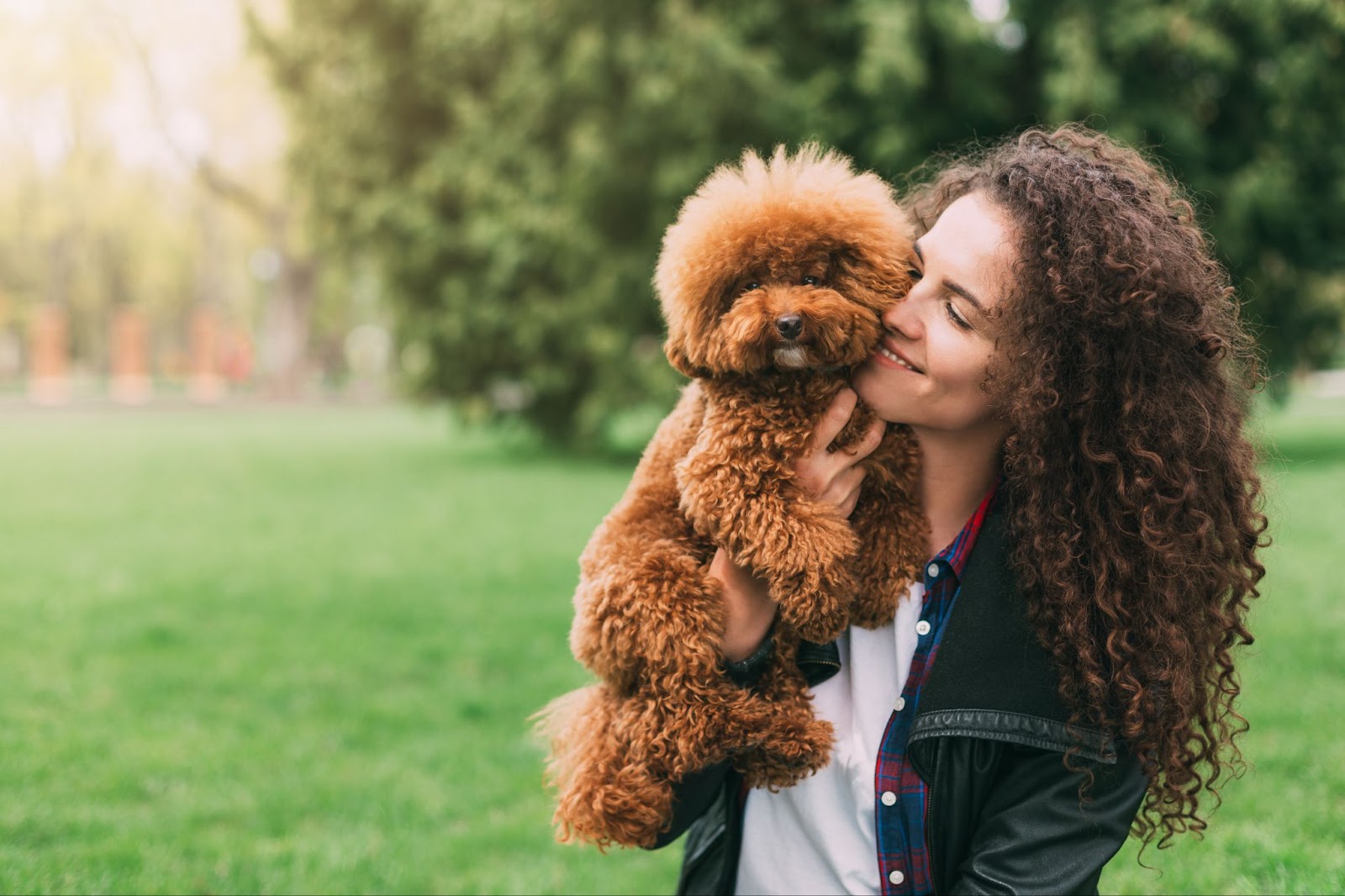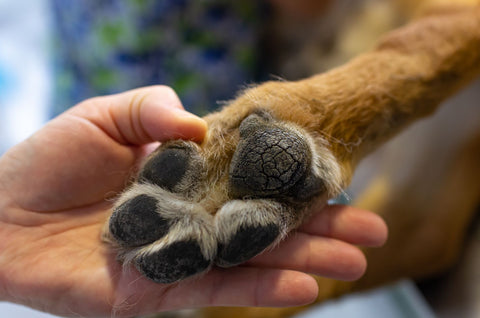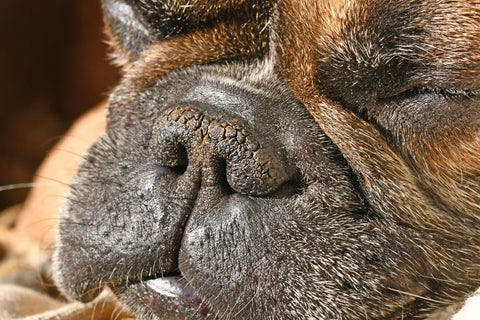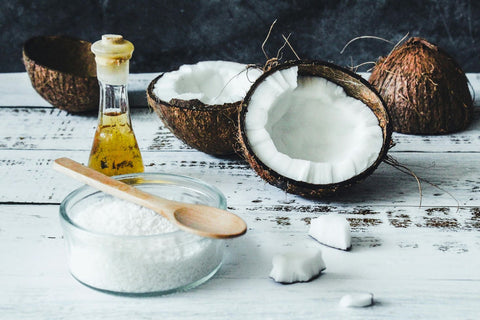To fix rough dog paws, clean them daily, apply a dog-safe paw balm with natural ingredients like lanolin or beeswax, avoid walking on hot or icy surfaces, and protect paws with wax or booties. Seek veterinary care if cracks bleed or don’t heal after 7–10 days of home treatment.

Rough or cracked paws may look like a minor problem, but they can make every step uncomfortable for your dog. Whether it's from winter salt, hot pavement, or constant licking, paw issues tend to get worse if ignored.
Rough Dog Paws: What’s Causing It & How to Fix It (At A Glance)
-
Hot Pavement or Icy Sidewalks: Damages paw pads and dries out skin.
-
Chemicals & Floor Cleaners: Residue on floors can irritate paw pads.
-
Nutritional Gaps: Low zinc or essential fatty acids can lead to weak, cracked skin.
-
Hyperkeratosis or Medical Issues: Overgrowth of paw skin or underlying conditions like hypothyroidism.
-
Excessive Licking or Chewing: Often makes the damage worse.
Quick Tip: Apply Legend’s Creek Farm Paw Balm post-walk or at bedtime, soothes cracks, hydrates dry spots, and creates a protective layer without greasy residue.
Why Dogs Get Rough Paws
Rough paws might look like a small issue at first, but they often point to real discomfort.
For dogs, paw pads serve as both protection and shock absorbers. When they become dry or cracked, it can hurt every step they take. Left untreated, what starts as a little dryness can turn into deeper fissures, infections, or even behavioral changes like limping or obsessive licking.
Living in a place like Buffalo, I’ve learned how fast cold sidewalks or salty driveways can damage paws, especially in winter. Heat can be just as harsh.
Add in cleaning products, poor nutrition, or age-related skin changes, and you’ve got a long list of reasons your dog might be walking gingerly or licking their feet nonstop.
Here are the most common causes of rough paws I see with customers and my own dogs:
-
Environmental exposure: Surfaces like hot asphalt, ice, snow, and road salt wear down the natural barrier of a dog’s paw skin.
-
Chemical irritants: Lawn treatments, sidewalk salt, and household floor cleaners can trigger inflammation or burns on contact.
-
Nutritional issues: A diet low in zinc or healthy fats can lead to poor skin condition, including paw pads that dry out or split.
-
Medical conditions: Issues like hypothyroidism, liver disease, or autoimmune disorders often show up in the paws before anywhere else.
-
Hyperkeratosis: In older dogs, the skin on the paw pad may grow too thick and become brittle or cracked.
Stop Rough Paws Before They Start
Fixing dry or cracked paws takes time, but avoiding the problem is much easier.
A few daily habits can make a big difference in keeping your dog’s paws healthy year-round. Prevention is more affordable and helps your dog stay active without interruptions for healing.
I’ve worked with many pet owners who want simple steps that fit into their routines.
Most of the time, they are dealing with environmental stressors like cold pavement, rough trails, or sidewalk salt. Others have indoor challenges like dry air from heating or residue from floor cleaning sprays. These small factors add up, but they are easy to manage with consistent care.
If you want to avoid rough paws before they start, try these habits:
-
Wipe paws after every walk: Use a damp cloth or gentle wipe to remove debris, salt, or allergens, especially during winter or after hikes.
-
Limit indoor chemical exposure: Clean floors with pet-safe products and avoid walking your dog across freshly treated surfaces.
-
Use a protective paw balm: Before walks, apply Legend’s Creek Farm Paw Balm to help lock in moisture and protect against salt, snow, and heat.
-
Avoid extreme temperatures: Walk during early mornings or late evenings in summer, and protect paws in freezing weather.
-
Feed a well-balanced diet: Nutritional support from zinc, protein, and healthy fats keeps paw pads supple and resistant to damage.
How to Heal Rough Dog Paws at Home

Most cases of dry or cracked paws can be handled at home with a little consistency and the right tools.
Unless you see active bleeding, swelling, or signs of infection, there is usually no need to schedule a vet visit right away. What matters most is cleaning the area, applying the right kind of balm, and giving your dog time to heal without further irritation.
I’ve had plenty of success using a simple paw care routine both for my own dogs and when guiding customers through the process.
The key is to treat the skin gently, avoid harsh products, and use a formula that your dog can safely lick. Greasy household ointments tend to get tracked all over the floor or licked off within minutes, which does very little for healing.
Here is a step-by-step routine that works:
-
Clean the paws with lukewarm water: Use a soft cloth or rinse to gently remove dirt, salt, or debris without scrubbing.
-
Use an oatmeal-based shampoo if needed: This helps soothe irritation and clean without stripping moisture.
-
Dry the paws completely: Moisture trapped between toes or in cracks can slow healing and invite bacteria.
-
Apply a lick-safe paw balm: Choose a formula made for dogs, free of synthetics and petroleum.
-
Let the balm absorb while your dog rests: Post-walk or pre-bedtime works best.
Ingredients Matter: Natural ≠ Optional
When a dog’s paws are dry or cracked, it can be tempting to reach for whatever ointment is already in the bathroom cabinet.
I’ve heard the question many times: Can I just use something I already have at home?
The short answer is no. Many household creams contain synthetic ingredients that may not be safe if licked. Some even block the skin from breathing, which slows healing and traps bacteria.
Dogs explore the world with their feet and mouths.
Whatever goes on their paws needs to be safe enough to be ingested in small amounts. This is why the ingredient list matters just as much as how well a product works. Choosing a balm with clean, natural components is the best way to help skin recover while keeping your pet safe.
Here are the ingredients I recommend looking for:
-
Lanolin: A deeply hydrating emollient that restores moisture and soothes without clogging skin.
-
Beeswax: Protects paws from salt and snow by forming a breathable layer over dry skin.
-
Neem oil: Fights bacteria and inflammation naturally, supporting recovery from licking and scratching.
-
Calendula: Calms irritation and supports healing in sensitive or cracked areas.
-
Olive and coconut oil: Provide deep, lasting hydration that helps rebuild the skin’s natural barrier.
Make Paw Care Part of a Bigger Pet Wellness Routine
When I see dogs with persistent paw issues, there is often something larger going on. Rough or cracked pads do not always show up on their own.
They can reflect gaps in hydration, dietary deficiencies, or a lack of consistent skin care. Treating the symptoms with one balm can bring short-term relief, but the goal should be long-term balance.
That requires a more complete approach.
That’s exactly why Legend’s Creek Farm offers Total Pet Bundle to support dogs from head to tail. It brings together paw balm, healing salves, and skin-nourishing ingredients that work together across the whole body.
A routine like this is especially helpful in homes with extreme weather, dry indoor heat, or active dogs who spend a lot of time outdoors.
I use the bundle with my own dogs, especially during seasonal changes, because it gives me confidence that I am not just covering up a problem. I am actually addressing it from multiple angles.
When to Stop with DIY Stuff and Call the Vet
While most cases of rough paws can be handled at home, there are times when healing stalls or things begin to get worse. I have spoken with dog owners who tried balm after balm with no success, only to later discover an underlying medical condition.
Knowing when to stop self-treating and seek veterinary help can make a big difference in your dog’s recovery.
Here are signs that it may be time to call the vet:
-
Cracks that bleed or ooze and do not begin to close within a day or two
-
Limping, avoiding pressure on one paw, or a change in the way your dog walks
-
Licking or chewing that becomes constant and causes additional damage
-
No visible improvement after a full week of consistent home care using pet-safe products
Veterinarians can check for issues like autoimmune reactions, liver or thyroid problems, and nutritional deficiencies that affect skin health.
Some dogs may need supplements or prescription treatments to restore balance. A vet visit is not a failure of home care. It is the next step when the basics are not enough and your dog needs deeper support.
Your Dog’s Paws Deserve More Than a Quick Fix
Your dog moves through the world on bare feet.
Every sidewalk, trail, or back porch leaves its mark. Dryness, cracks, and discomfort are not just side effects of play and weather. They are signals that care is needed. Fast solutions are helpful, but lasting results come from consistency and quality.
Pay attention to what your dog is telling you. Then choose products made with care by people who understand what real healing takes.
Legend’s Creek Farm is an animal-friendly company, and makes products that are completely safe to use on your pets.
Browse the full pet care collection and find what works for your dog.





